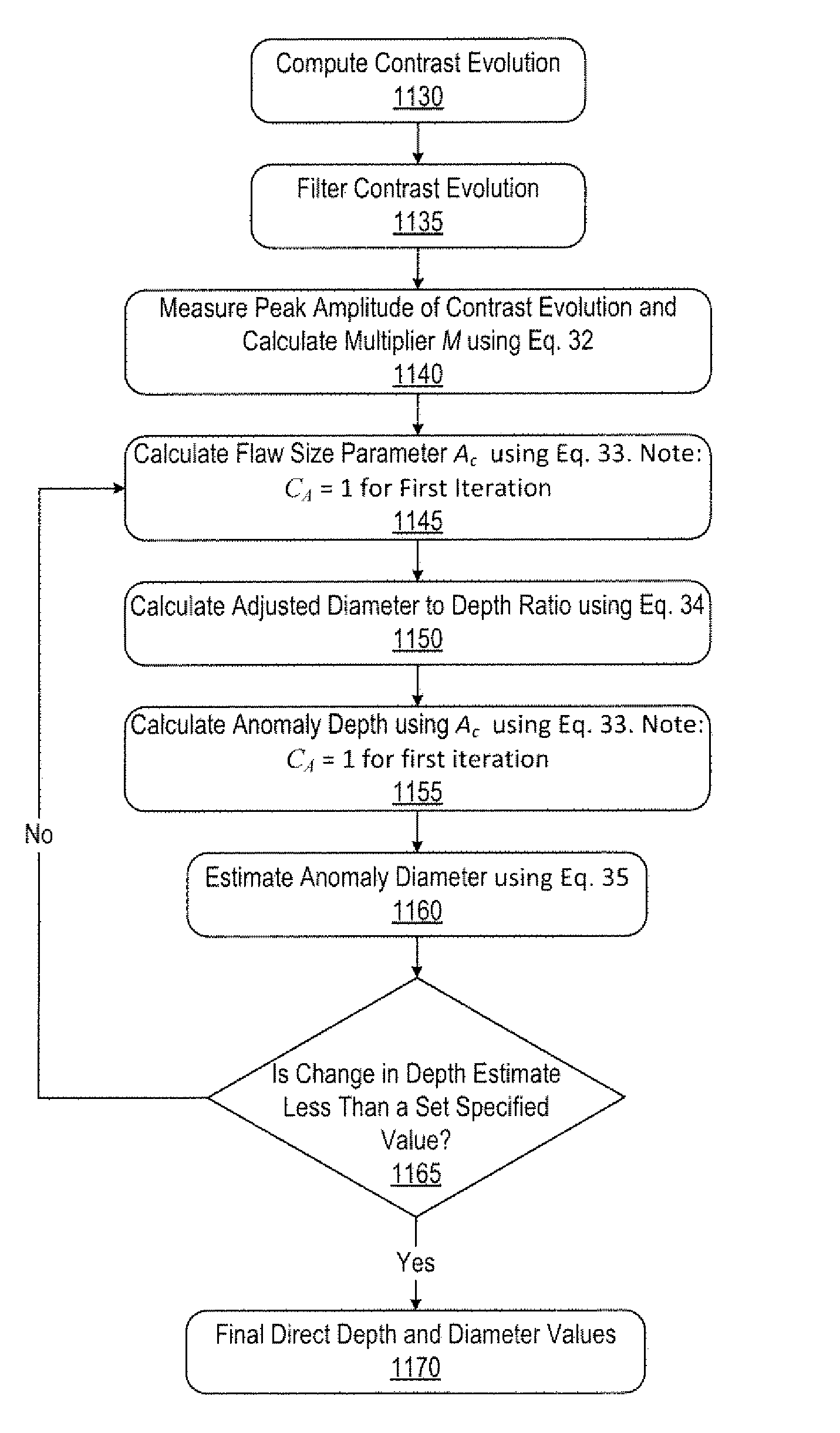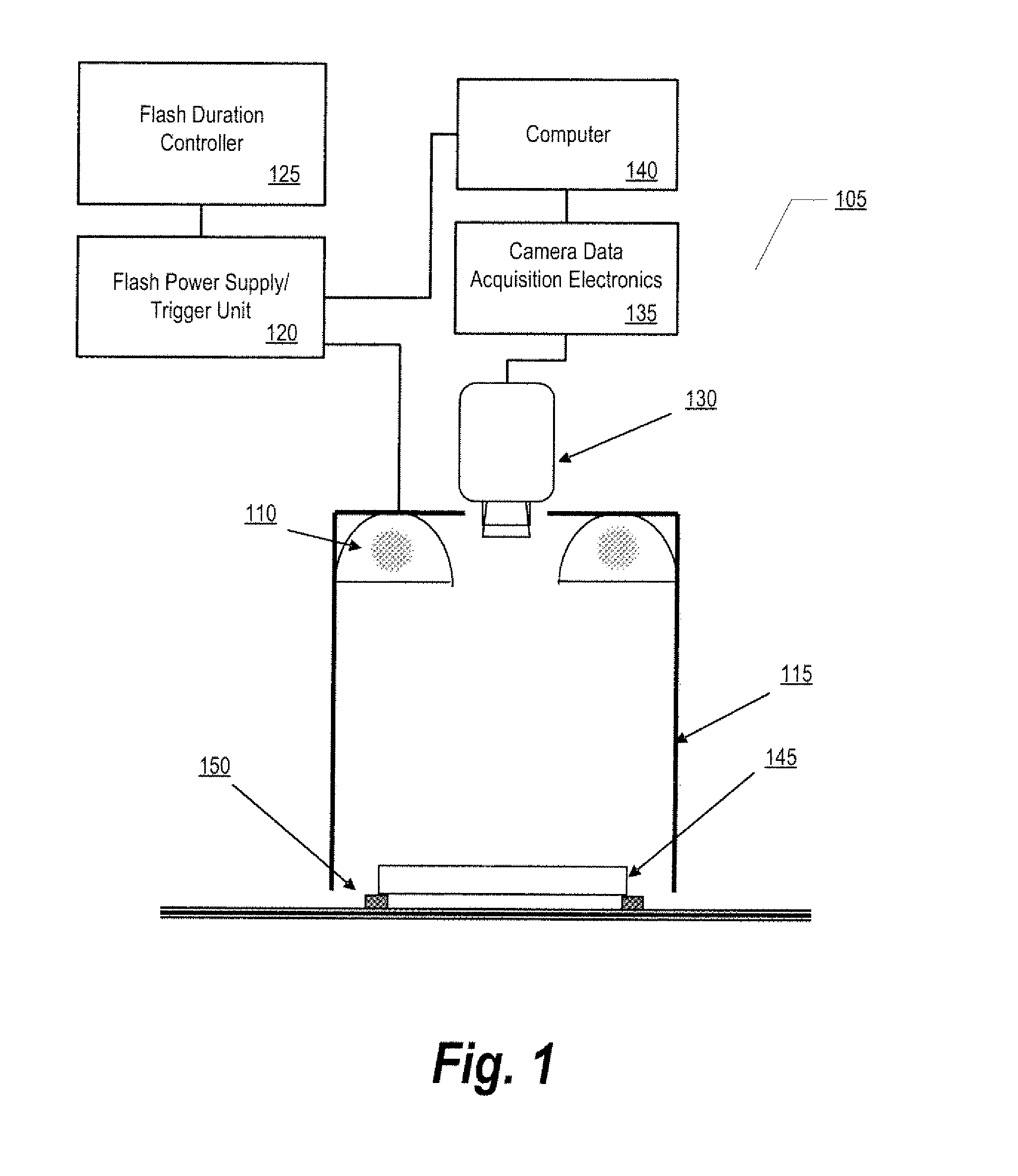Methods and systems for characterization of an anomaly using infrared flash thermography
a technology of infrared flash thermography and anomaly detection, applied in the field of non-destructive evaluation, can solve problems such as differences between two width measurements
- Summary
- Abstract
- Description
- Claims
- Application Information
AI Technical Summary
Benefits of technology
Problems solved by technology
Method used
Image
Examples
Embodiment Construction
[0050]The objects in the drawings are not necessarily to scale and certain features may be shown exaggerated in scale or in somewhat generalized or schematic form in the interest of clarity and conciseness. In the description which follows like parts may be marked throughout the specification and drawings with the same reference numerals. The foregoing brief description of the drawings is provided for a more complete understanding thereof. It should be understood, however, that the embodiments described are not limited to the precise arrangements and configurations shown. Although the design and use of various embodiments are discussed in detail below, it should be appreciated that the embodiments described represent concepts that may be embodied in a wide variety of contexts. The specific aspects and embodiments described herein are merely illustrative, for it would be impossible or impractical to include all of the possible embodiments and contexts in this detailed description. Up...
PUM
 Login to View More
Login to View More Abstract
Description
Claims
Application Information
 Login to View More
Login to View More - R&D
- Intellectual Property
- Life Sciences
- Materials
- Tech Scout
- Unparalleled Data Quality
- Higher Quality Content
- 60% Fewer Hallucinations
Browse by: Latest US Patents, China's latest patents, Technical Efficacy Thesaurus, Application Domain, Technology Topic, Popular Technical Reports.
© 2025 PatSnap. All rights reserved.Legal|Privacy policy|Modern Slavery Act Transparency Statement|Sitemap|About US| Contact US: help@patsnap.com



